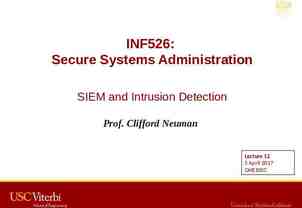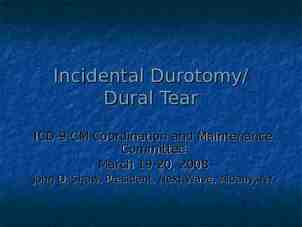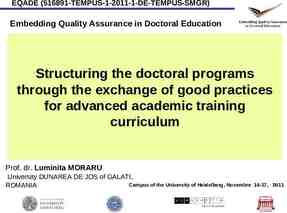PNT Advisory Board 14 May 2009 Brigadier General John E.
10 Slides373.00 KB

PNT Advisory Board 14 May 2009 Brigadier General John E. Hyten Director of Requirements DISTRIBUTION A: Approved for public release; distribution unlimited

GPS Locations (as of 12 May 09) 180 57 C1 160 140 120 27 39 A1 100 GLAN (deg) 80 58 35 3049 B2 36 B6 33 C2 59 C3 IIF-1 40 52 A2 34 60 53 C4 61 D4 D1 40 44 20 0 25 48 38 A B3 24 45 A4 D 26 IIR-21(M) 41 F1 54 E4 32 F2 Watch List Empty Slot Block IIA (12) Block IIA residual (3) D3 60 C E3 55 47 E2 A3 B E1 46 D2 B1 56 23 51 37 B4 B5 43 F3 E F4 F DISTRIBUTION A: Approved for public release; distribution unlimited Block IIR (12) Block IIR-M (6) Block IIR-M (L-5) (1) 2

Recent Successes In 2007, Architecture Evolution Plan replaced the 22 yr old, unsustainable GPS Master Control Station Transition was seamless to GPS users worldwide Next increment scheduled for Fall 2009 Final IIR-M launch scheduled for Aug 2009 IIR-M (20) launched Mar 2009 and performed a successful broadcast of L5, securing International Telecommunication Union filing Seven IIR-M’s on orbit starting in Sep 2005 IIF scheduled for first launch Jan 2010 GPSIII CDD validated Aug 2007 with an update in progress MGUE CDD is currently being staffed HQ AFSPC/A5/PNT Advisory Board.PPT DISTRIBUTION A: Approved for public release; distribution unlimited 3

New Signals L2C Provides high-performance Civilian Navigation Message (CNAV) and ionospheric correction for civil users Transmissions began 2005 on IIR-M vehicles Currently, 7 IIR-Ms transmitting L2C codeless “Type 0” CNAV messages will begin Fall 2009 Allows UE manufacturers to begin developmental testing with live L2C broadcasts Full CNAV implementation on IIR-M and later with OCX L5 Provides safety-of-life applications, is open to all users, and protected in aeronautical radionavigation service band On-orbit broadcast 10 Apr 2009 secured ITU frequency filing with codeless broadcast on IIR-M (20) Full CNAV implementation on IIF and III with OCX HQ AFSPC/A5/PNT Advisory Board.PPT DISTRIBUTION A: Approved for public release; distribution unlimited 4

Future Signal Transition GPS III satellites will broadcast 4 civil signals and 4 military signals L1 C/A, L1C, L2C, and L5; L1 P(Y), L1M, L2 P(Y), and L2M Newer signals are better -- military and civil L1C provides compatibility with European Galileo system L1M provides higher power military signal to mitigate jamming L5 provides higher power on protected Aeronautical Radio Navigation Service band and a 2nd frequency to mitigate ionospheric errors Broadcasting 8 signals reduces satellite life due to power issues We must start planning now to transition off old signals L1 C/A, L1 P(Y), and L2 P(Y) Transition is a decade or two away AF desires this to be a GPS community activity HQ AFSPC/A5/PNT Advisory Board.PPT DISTRIBUTION A: Approved for public release; distribution unlimited 5

PRN Code Assignment US GPS Industry Council expressed concern to AFSPC that Pseudorandom Noise (PRN) codes did not adhere to a sound interagency review process (ltr, 14 Jan 09) Two Concerns: Civil PRN codes were assigned to private companies without a sound interagency process review Will be difficult for the U.S. to obtain the support of other nations to augment the U.S. GPS with their national radionavigation satellite systems AFSPC/CC response: National Space-Based PNT Systems Engineering Forum (NPEF) will review assignment process and recommend improvements HQ AFSPC/A5/PNT Advisory Board.PPT DISTRIBUTION A: Approved for public release; distribution unlimited 6

Military GPS User Equipment (MGUE) MGUE is next step in UE modernization Brings M-Code capability to warfighters Enables all benefits of modernized GPS Space and Control Segments of GPS III -- key element to synchronizing GPS segments AFSPC developing technology for receivers Will use both legacy P(Y) signals and M-Code along with civil coarse acquisition (C/A) signals -- collectively termed YMCA Air Force is working to develop a flexible acquisition approach that will allow a family of receiver solutions HQ AFSPC/A5/PNT Advisory Board.PPT DISTRIBUTION A: Approved for public release; distribution unlimited 7

MGUE (cont) MGUE requirements document entered staffing in May 2009 Co-authored by AFSPC and Services; end user GPS requirements documented in operational domains (ground, air, maritime, and space) Will go through approval process concurrent with updated GPS III CDD After tech development AF will integrate GPS capability in approved lead platforms identified in draft MGUE CDD Air Domain, Maritime Domain, Ground Domain, Joint Handheld (by policy) HQ AFSPC/A5/PNT Advisory Board.PPT DISTRIBUTION A: Approved for public release; distribution unlimited 8

GPS GAO Report GAO stated concern in the Apr 2009 report regarding not enough satellites in the pipeline to sustain the constellation Availability may be put to test due to delays in the acquisition schedule Air Force testified before Congress on 7 May 2009 on methods to mitigate the potential gap or minimize the impact Constellation health and gap management Residual Operations Power Management Acquisition actions Solid Mission Assurance practices Incorporating lessons learned from IIF program HQ AFSPC/A5/PNT Advisory Board.PPT DISTRIBUTION A: Approved for public release; distribution unlimited 9

Wrap Up GPS is healthy -- tremendous accomplishments in the last year GPS moving forward with development and deployment of civil signals -- improving nav accuracy and enabling safety of life Important to begin signal transition discussion GPSW is teaming with NPEF to review the PRN code assignment process for improvements MGUE will improve GPS capabilities for warfighters -- resistance to jamming and ops in challenged environments New acquisition approach is essential HQ AFSPC/A5/PNT Advisory Board.PPT DISTRIBUTION A: Approved for public release; distribution unlimited 10






